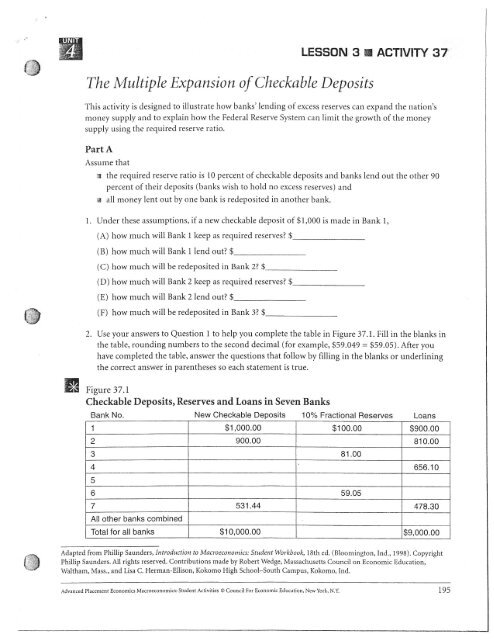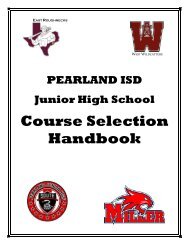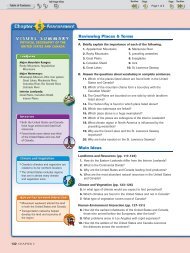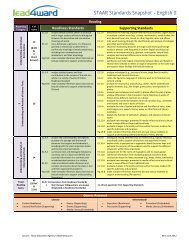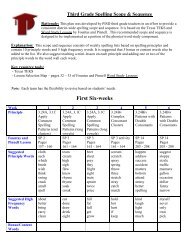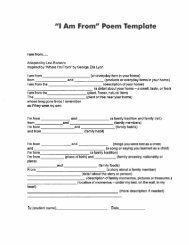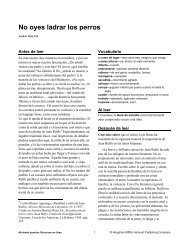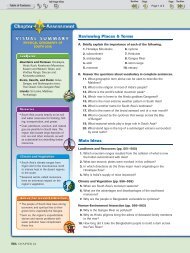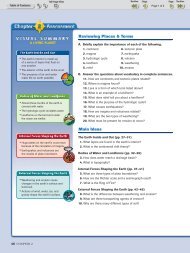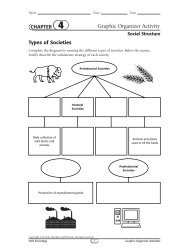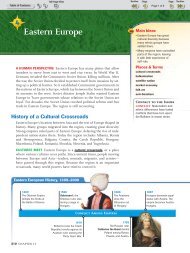The Multiple Expansion of Checkable Deposits - Pearland ...
The Multiple Expansion of Checkable Deposits - Pearland ...
The Multiple Expansion of Checkable Deposits - Pearland ...
You also want an ePaper? Increase the reach of your titles
YUMPU automatically turns print PDFs into web optimized ePapers that Google loves.
LESSONSryACTIVITYST<br />
<strong>The</strong> <strong>Multiple</strong> <strong>Expansion</strong> <strong>of</strong> <strong>Checkable</strong> <strong>Deposits</strong><br />
This activity is designed to illustrate how banks' lending <strong>of</strong> excess reserves can expand the nation's<br />
money supply and to explain how the Federal Reserve System can limit the growth <strong>of</strong> the money<br />
supply using the required reserve ratio.<br />
Part A<br />
Assume that<br />
a the required reserve ratio is 10 percent <strong>of</strong> checkable deposits and banks lend out the other 90<br />
percent <strong>of</strong> their deposits (banks wish to hold no excess reserves) and<br />
a all money lent out by one bank is redeposited in another bank.<br />
l. Under these assumptions, if a new checkable deposit <strong>of</strong> $1,000 is made in Bank 1,<br />
(A) how much will Bank I keep as required reserves? $<br />
(B) how much will Bank I lend out? $<br />
(C) how much will be redeposited in Bank 2? $<br />
(D) how much will Bank 2 keep as required reserves? $<br />
(E) how much will Bank 2 lend out? $<br />
(F) how much will be redeposited in Bank 3? $<br />
2. Use your answers to Question i to help you complete the table in Figure 37.1. Fill in the blanks in<br />
the table, rounding numbers to the second decimal (for example, $59.049 : $59.05). After you<br />
have completed the table, answer the questions that follow by filling in the blanks or underlining<br />
the correct answer in parentheses so each statement is true.<br />
m Figure 37.1<br />
<strong>Checkable</strong> <strong>Deposits</strong>, Reserves and Loans in Seven Banks<br />
Bank No.<br />
New <strong>Checkable</strong> <strong>Deposits</strong> 107" Fractional Reserves<br />
1 $1,000.00 $1oo.oo $900.00<br />
2 900.00 810.00<br />
3 81.00<br />
4 656.10<br />
5<br />
6 59.05<br />
7 531.44 478.30<br />
All other banks combined<br />
Totalfor all banks $10,000.00 $9,000.00<br />
Adapted from Phillip Saunders, Introduction to Macroeconomics: Student Workbook, 18th ed. (Bloomington, Ind., 1998). Copyright<br />
Phillip Saunders, All rights reserved. Contributions made by Robert Wedge, Massachusetts Council on Economic Education,<br />
Waltham, Mass., and Lisa C. Herman-Ellison, Kokomo High School-South Campus, Kokomo, Ind.<br />
Advanced Placement Eco[omics Macroeconomics: Student Activities @ Council For Economic Education, New York, N.Y. 195
LESSON 3 f, ACTIVITY 37 lcontinueal,i<br />
3. In this example:<br />
(A) <strong>The</strong> original deposit <strong>of</strong> $1,000 increased total bank reserves by $-.<br />
to a total <strong>of</strong> g 10,000 expansion <strong>of</strong> bank deposits,<br />
original deposit, while _<br />
Eventually, this led<br />
<strong>of</strong> which was because <strong>of</strong> the<br />
was because <strong>of</strong> bank lelding activities.<br />
(B) <strong>The</strong>refbre, if the fractional reserve had been l5 percent instead <strong>of</strong> l0 percent, the amount <strong>of</strong><br />
cleposit expansion would have been (more / /ess) than in this example.<br />
(C) <strong>The</strong>refbre, if the fractional reserve had been 5 percent instead <strong>of</strong> l0 percent, the amount <strong>of</strong><br />
deposit expansion would have been (more / less) than in this example.<br />
(D) f f banks had not loaned out all <strong>of</strong> their excess reserves, the amount <strong>of</strong> deposit expansion<br />
would have been (more / less) than in this example.<br />
(E) tf all loans had not been redeposited in the banking system, the amount <strong>of</strong> deposit expansion<br />
would have been (ntore / /ess) than in this example.<br />
4. Another way to represent the multiple expansion <strong>of</strong> deposits is through T-accotmts.In short, a<br />
T-account is an accounting relationship that looks at changes in balance sheet items. Since balance<br />
sheets must balance, so, too, must T-accounts. T-account entries on the asset side must be<br />
balanced by an <strong>of</strong>fsetting asset or an <strong>of</strong>fsetting liability. A sample T-account is provided below. For<br />
the bank, assefs include accounts at the Federal Reserve District Bank, Treasury securities and<br />
loans; tiabilities are deposits and net worth is assets minus liabilities. Show how the $ 1 ,000 checkable<br />
deposit described in Question I would be listed in a T-account.<br />
"&<br />
196 Advanced Placement Economics Macroeconomics: Student Activities @ Council For Economic Education, New York, N'Y
' al;<br />
@<br />
Part B<br />
LESSON' 3' I, ACTIVITY 37 (continued;,r<br />
<strong>The</strong> Federal Reserve sets the reserve requirements: the percentages <strong>of</strong> the bank's deposits that the<br />
bank must hold as reserves. Banks may not loan out these required reserves. As we said in Part A, this<br />
fractional reserve system actually allows banks to create money. <strong>The</strong> amount <strong>of</strong> reserves a bank holds<br />
is known as its total reserves. Total reserves are composed <strong>of</strong> required reserves, which the bank must<br />
keep, and excess reserves, which the bank can loan to other customers. <strong>The</strong> reserves held by the bank<br />
beyond those required by the Fed are excess reseryes.<br />
How much money would be created if the bank continued to loan out its excess reserves to the last<br />
penny? To find out, we must calculate the tleposit expansion multiplier. <strong>The</strong> deposit expansion multiplier<br />
determines how much money can be created in the economy from an initial deposit. <strong>The</strong><br />
formula for the deposit expansion multiplier is<br />
Deposit expansion multiplier =<br />
In the example in Part A, the Federal<br />
deposit expansion multiplier would be<br />
reserve requirement<br />
Reserve set the reserve requirement at l0 percent. So the<br />
Deposit expansion multiplier = =10<br />
0.10<br />
To find the maximum amount <strong>of</strong> money that could be created, the formula is<br />
<strong>Expansion</strong> <strong>of</strong> the money supply = deposit expansion multiplier x excess reserves<br />
<strong>The</strong> multiplier is 10, and excess reserves from the initial bank deposit are $900. so the potential<br />
expansion <strong>of</strong> money (MI) would be<br />
<strong>Expansion</strong><strong>of</strong> themoneysupply = 10 x $900 = $9,000<br />
Ml now consists <strong>of</strong> the original $1,000 deposit plus the $9,000 created.<br />
Advanced Placement Economics Macroeconomics: Student Activities @ Council For Economic Education, New York, N.y. 197
LESSON 3 n ACTIVITY 37 (continuedl<br />
5. Assume that $ 1,000 is deposited in the bank, and that.each bank loans out all <strong>of</strong> its excess<br />
reserves. For each <strong>of</strong> the following required reserve ratios, calculate the amount that the bank<br />
must hold in required reserves, the amount that will be excess reserves, the deposit expansion<br />
multiplier and the maximurn amount that the money supply could increase.<br />
Required reserves<br />
Excess reserves<br />
Deposit expansion multiPlier<br />
Maximum increase in the<br />
money supply<br />
Required Reserve Ratio<br />
17o 5o/o 1O"/" 12.5/" 15% 25%<br />
6. If the required reserve ratio were 0 percent, then money supply expansion would be infinite. Why<br />
clon't we want an infinite growth <strong>of</strong> the money supply? (Hint: remember the equation <strong>of</strong><br />
exchange: MV = PQ.)<br />
7. If the Federal Reserve wants to increase the money supply, should it raise or lower the reserve<br />
requirement? Why?<br />
i:B<br />
8. If the Federal Reserve increases the reserve requirement and velocity remains stable, what will<br />
happen to nominal GDP? Why?<br />
9. What economic goal might the Federal Reserve try to meet by reducing the money supply?<br />
10. Why might the money supply not expand by the amount predicted by the deposit expansion<br />
multiplier?<br />
198 Advanced Placement Economics Macroeconomics: Student Activities @ Council For Economic Education, New York, N.Y.


